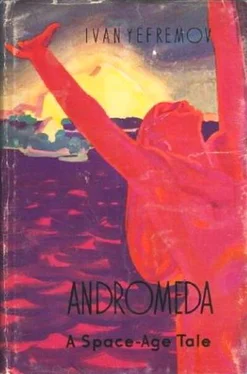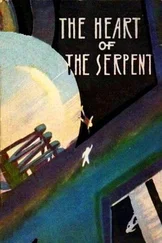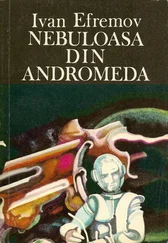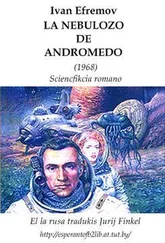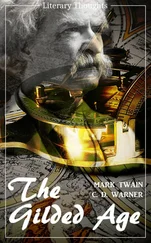Ivan Yefremov - Andromeda (A Space-Age Tale)
Здесь есть возможность читать онлайн «Ivan Yefremov - Andromeda (A Space-Age Tale)» весь текст электронной книги совершенно бесплатно (целиком полную версию без сокращений). В некоторых случаях можно слушать аудио, скачать через торрент в формате fb2 и присутствует краткое содержание. Город: Moscow, Год выпуска: 1959, Издательство: FOREIGN LANGUAGES PUBLISHING HOUSE, Жанр: Фантастика и фэнтези, на английском языке. Описание произведения, (предисловие) а так же отзывы посетителей доступны на портале библиотеки ЛибКат.
- Название:Andromeda (A Space-Age Tale)
- Автор:
- Издательство:FOREIGN LANGUAGES PUBLISHING HOUSE
- Жанр:
- Год:1959
- Город:Moscow
- ISBN:нет данных
- Рейтинг книги:5 / 5. Голосов: 1
-
Избранное:Добавить в избранное
- Отзывы:
-
Ваша оценка:
- 100
- 1
- 2
- 3
- 4
- 5
Andromeda (A Space-Age Tale): краткое содержание, описание и аннотация
Предлагаем к чтению аннотацию, описание, краткое содержание или предисловие (зависит от того, что написал сам автор книги «Andromeda (A Space-Age Tale)»). Если вы не нашли необходимую информацию о книге — напишите в комментариях, мы постараемся отыскать её.
Andromeda (A Space-Age Tale) — читать онлайн бесплатно полную книгу (весь текст) целиком
Ниже представлен текст книги, разбитый по страницам. Система сохранения места последней прочитанной страницы, позволяет с удобством читать онлайн бесплатно книгу «Andromeda (A Space-Age Tale)», без необходимости каждый раз заново искать на чём Вы остановились. Поставьте закладку, и сможете в любой момент перейти на страницу, на которой закончили чтение.
Интервал:
Закладка:
Evda Nahl finished her lecture and went down to the front row of seats where Veda Kong greeted her as they had done Chara at the fete. All those present stood up and repeated the gesture, in this way expressing their admiration for an incomparable art.
CHAPTER TEN
TIBETAN EXPERIMENT
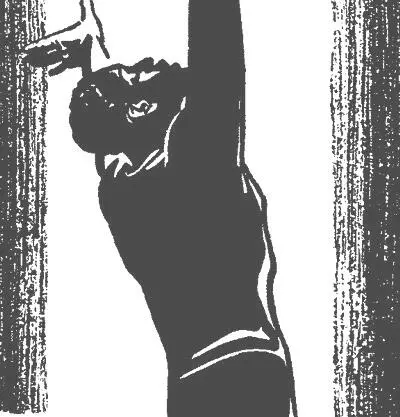
The Corr Yule installation on the flat top of a high mountain was no more than a thousand metres from the Astronautical Council’s Tibetan Observatory. It stood at a height of nearly 4,000 metres where the only trees that would grow were a dark-green leafless variety with branches bending inwards towards the top brought from Mars. Although the light-yellow grass in the valleys waved in the wind these rigid iron-limbed strangers from another world stood motionless. The slopes were covered with streams of stones, the remnants of eroded rocks. The fields, patches and strips of snow gleamed with that special whiteness that belongs to mountain snow under a clear sky.
A tower built of steel tubes supporting two latticed arches stood behind crumbling diorite walls belonging to a ruined monastery that had been built with astounding audacity at that great height. On the arches lay an inclined parabolic spiral of beryllium bronze dotted with the gleaming white spots of rhenium contacts and open to the sky. Close beside it lay a second spiral with the open end turned to the ground to form a cover over eight huge cones made of the greenish borason amalgam. Energy was brought to the installation by branches of the main pipe, six metres in diameter. The valley was crossed by a line of pylons with directing rings, a temporary line from the observatory’s main that was used when transmissions requiring the energy of all the world’s stations were in progress. Renn Bose, scratching his tousled head, reviewed with a pleased air the changes that had been made in the former installation. It had all been done by volunteers in an incredibly short time. The most difficult job had been the digging of deep, open trenches in the hard stone of the mountain without the use of big mining machines. But that was all over and the volunteer workers, justly believing themselves entitled to see the great experiment as a reward for their labours, had moved to some distance from the installation and found a place for their tents on the mountain slope to the north of the observatory.
Mven Mass, who was in control of all communications with the Cosmos, sat on a cold boulder opposite the physicist and, shivering slightly from the cold, told him the latest news from the Great Circle. Satellite 57 had been used recently for communication with spaceships and planetships and had not been working for the Circle. Mven Mass also told him of the death of Vlihh oz Ddiz near star E at which the weary physicist showed more interest.
“The high gravitational tension of star E will lead to its becoming overheated in its further evolution. It is becoming a violet super-giant of tremendous power that is overcoming colossal gravitation. The red end of the spectrum is missing altogether and, despite the strength of the gravitational field, the waves of light rays are shortened and not lengthened.”
“They become very short violet or even ultra-violet,” agreed Mven Mass.
“That’s not all. The process goes farther. The quanta become bigger until at last the transition takes place — there is a zero field and antispace — the other side of the movement of matter that is unknown to us on earth owing to the insignificant scale of everything we have. We could not achieve anything like it even if we were to burn up all the hydrogen in all the water on Earth.”
Mven Mass made a lightning mental calculation.
“If we translate fifteen thousand trillion tons of water into the energy of the hydrogen cycle on the principle of the relativity of mass-energy we should get roughly a trillion tons of energy. The Sun gives off 240 million tons a minute so that it would be equal to no more than the Sun’s radiation for ten years.”
Renn Bose gave a smile of satisfaction.
“And how much does a blue super-giant radiate?”
“I can’t compute it at once. But you can judge for yourself. In the Greater Magellanic Cloud there is a cluster, NGK 1910, near the Tarantula Nebula… excuse me, I’m accustomed to using the old names and numbers for heavenly bodies!”
“It doesn’t matter at all!”
“Cluster 1910 is only 70 parsecs in diameter but it contains no less than a hundred super-giant stars. And the Tarantula Nebula is so bright that if it could be moved closer to us like, for example, the Orion Nebula that everybody knows so well, it would be as bright as our Moon. In that area there is the binary blue super-giant in the Dorado, with clear-cut hydrogen lines in the spectrum and dark lines at the violet end. It is greater than Earth’s orbit in diameter and its luminosity is about half a million of our suns! Is that the sort of star you mean? In that same cluster there are stars bigger in size, with a diameter equal to Jupiter’s orbit, but they are only just beginning to warm up.”
“We’ll leave the super-giants alone. For thousands of years people have been looking at the annular nebulae in Aquarius, Ursa Major and Lyra, not realizing that they have before them neutral fields of zero gravitation, which, according to the repagulum law, is the transition from gravitation to antigravitation. It was there that the riddle of zero space was hidden.”
Renn Bose jumped up from where he had been sitting on the doorstep of the control room, a shelter built of huge blocks of cast stone.
“I’m sufficiently rested. We can begin now.”
Mven Mass’ heart was beating fast and he was almost choking from excitement. His breathing was deep and irregular. Renn Bose remained quite calm, the feverish gleam of his eyes alone betraying the concentration of thought and will-power that the physicist had achieved in order to begin his dangerous experiment.
Mven Mass squeezed Renn Bose’s tiny hand in his huge palm. A nod of the head and Mven’s tall figure was striding downhill along the road to the observatory. The cold wind howled wildly down from the ice-bound mountain giants that stood guard over the road. Mven Mass shivered and involuntarily hurried his footsteps although, actually, there was no need for haste. The experiment was to begin at sunset.
Mven Mass established radio communication with Satellite 57, using the lunar waveband. The reflectors and directors set up on the station were fixed on Epsilon Tucanae for the few minutes of the satellite’s revolution from 33° north latitude to the South Pole during which the star was visible.
Mven Mass took his place at the control desk in the underground room, a place very similar to that at the Mediterranean Observatory.
For the thousandth time he looked through the sheets of data on the planet of the star Epsilon Tucanae, again systematically checked up the orbit of the planet and again got in touch with Satellite 57 and gave instructions that at the moment when the field was switched they must very slowly change direction along an arc four times greater than the parallax of the star.
The time passed slowly. Mven Mass could not rid himself of thoughts of Beth Lohn, the criminal mathematician. Renn Bose appeared on the TVP screen seated at the control desk of his installation. His stiff hair was sticking up more than usual.
The dispatchers at the power stations had been warned and reported their readiness. Mven Mass’ hand moved towards the switches on his desk but a motion from Renn Bose in the screen stopped him.
“We must warn the reserve Q station on the Antarctic. We have not got sufficient power.”
Читать дальшеИнтервал:
Закладка:
Похожие книги на «Andromeda (A Space-Age Tale)»
Представляем Вашему вниманию похожие книги на «Andromeda (A Space-Age Tale)» списком для выбора. Мы отобрали схожую по названию и смыслу литературу в надежде предоставить читателям больше вариантов отыскать новые, интересные, ещё непрочитанные произведения.
Обсуждение, отзывы о книге «Andromeda (A Space-Age Tale)» и просто собственные мнения читателей. Оставьте ваши комментарии, напишите, что Вы думаете о произведении, его смысле или главных героях. Укажите что конкретно понравилось, а что нет, и почему Вы так считаете.
